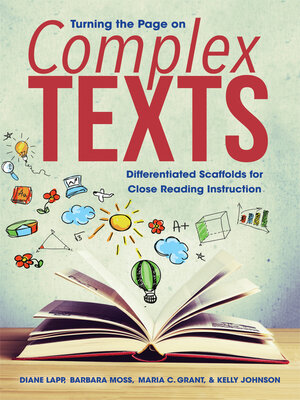Turning the Page on Complex Texts
ebook ∣ Differentiated Scaffolds for Close Reading Instruction (Grade-Specific Classroom Scenarios for Common Core State Standards)
By Diane Lapp

Sign up to save your library
With an OverDrive account, you can save your favorite libraries for at-a-glance information about availability. Find out more about OverDrive accounts.
Find this title in Libby, the library reading app by OverDrive.



Search for a digital library with this title
Title found at these libraries:
| Loading... |
Ensure all learners become successful close readers. In this powerful resource, the authors examine what features make a text complex. Learn how to select appropriate complex texts and design instruction to meet the needs of every student. Explore grade-specific classroom scenarios that illustrate how to scaffold lessons to foster close reading and deepen comprehension at all stages of K–12 education.
Benefits
Contents
Introduction
Part I: Background and Planning Information
1 Understanding Close Reading
2 Identifying Text Complexity
3 Making Decisions That Support Close Reading Instruction
4 Assessing During Close Reading
Part II: Instructional Scenarios
5 Understanding What the Text Says Through Differentiated Scaffolds
6 Understanding How the Text Works Through Differentiated Scaffolds
7 Understanding What the Text Means Through Differentiated Scaffolds
8 Supporting Knowledge Demands with Differentiated Scaffolds
Epilogue
Appendix A
References and Resources






